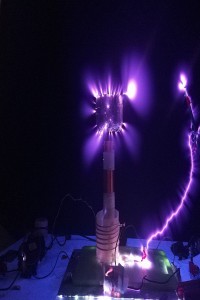Research Article
Year 2020,
Volume: 23 Issue: 1, 43 - 51, 29.02.2020
Abstract
Vehicle hybridization is considered a promising alternative for pollutant emission mitigation. This type of vehicle
combines the use of an internal combustion engine and electrical power. One of the most common layout is the
series-parallel hybrid vehicle, which consists of the use of one combustion engine as the main source of power in
parallel to electrical sources. Besides propelling the vehicle, the combustion engine has the task of supplying energy
to the electrical system. In parallel to hybridization, other technologies, such as the downsizing of an engine via
turbocharging, have been adopted to increase thermal efficiency of internal combustion engines. The purpose of this
work is to analyse the viability of combining the aforementioned technologies. To improve energy utilisation, part of
the energy of the exhaust system is recovered from a free turbine, being directed to the vehicle's battery. To evaluate
the viability of the proposal, experimental data was obtained from a turbocharged spark-ignition engine. Efficiency
indexes were calculated based on exergetic analyses for the turbo-compressor set and the entire engine system.
Thereafter, a virtual free turbine was virtually added, assuming that it operates exactly as the main turbine and the
efficiency indexes were re-calculated as also absolute values of the recovered energy. The comparison of results
indicates the viability of implementing this proposal.
Supporting Institution
Fundação de Amparo à Pesquisa do Estado de São Paulo (FAPESP)
Project Number
2013/50238-3, 2018/18859-1
Thanks
The authors would like to express their gratitude to prof. Clayton Barcelos Zabeu and the staff of Mauá Institute of Technology for the execution of the experimental tests and to Fundação de Amparo à Pesquisa do Estado de São Paulo (FAPESP) for the financial support through process No. 2013/50238-3 and 2018/18859-1.
References
- Noam Lior, Professor of Mechanical Engineering and Applied Mechanics, University of Pennsylvania (US); Guest Professor, Chinese Academy of Sciences.Email: lior@seas.upenn.edu
- Jamie Turner, Professor, Department of Mechanical Engineering Powertrain and Vehicle Research Centre (PVRC), University of Bath (UK).Email: J.Turner@bath.ac.uk
- André Valente Bueno, Associated Professor, Universidade Federal do Ceará (Brazil).Email: bueno@ufc.br
Year 2020,
Volume: 23 Issue: 1, 43 - 51, 29.02.2020
Abstract
Project Number
2013/50238-3, 2018/18859-1
References
- Noam Lior, Professor of Mechanical Engineering and Applied Mechanics, University of Pennsylvania (US); Guest Professor, Chinese Academy of Sciences.Email: lior@seas.upenn.edu
- Jamie Turner, Professor, Department of Mechanical Engineering Powertrain and Vehicle Research Centre (PVRC), University of Bath (UK).Email: J.Turner@bath.ac.uk
- André Valente Bueno, Associated Professor, Universidade Federal do Ceará (Brazil).Email: bueno@ufc.br
There are 3 citations in total.
Details
| Primary Language | English |
|---|---|
| Subjects | Thermodynamics and Statistical Physics, Energy Systems Engineering (Other), Mechanical Engineering |
| Journal Section | Regular Original Research Article |
| Authors | |
| Project Number | 2013/50238-3, 2018/18859-1 |
| Publication Date | February 29, 2020 |
| Published in Issue | Year 2020 Volume: 23 Issue: 1 |


